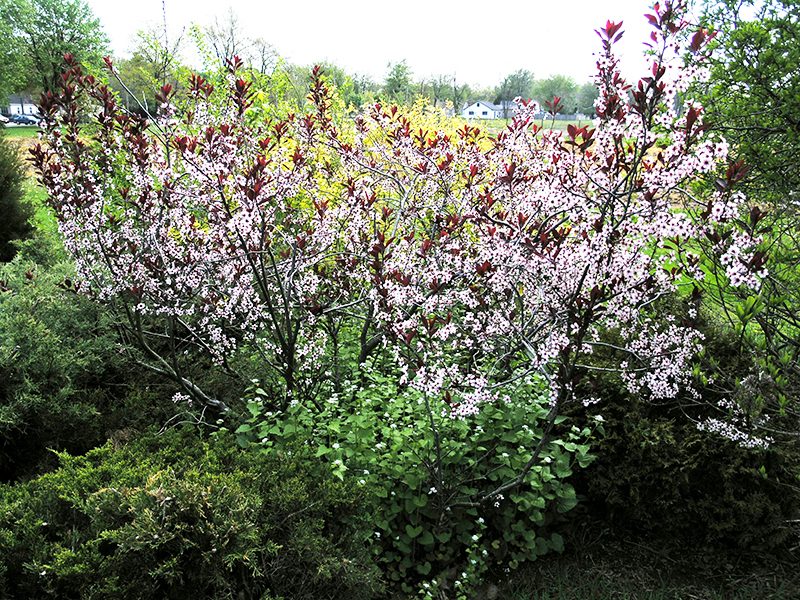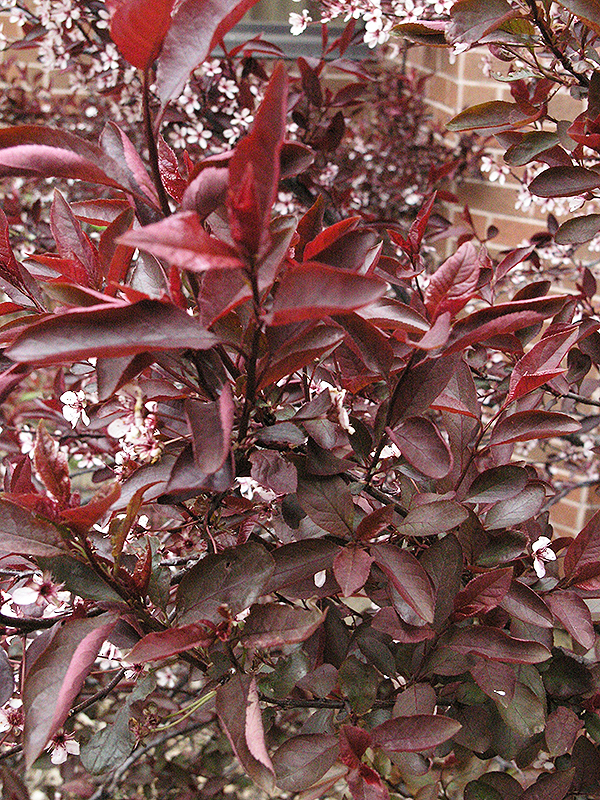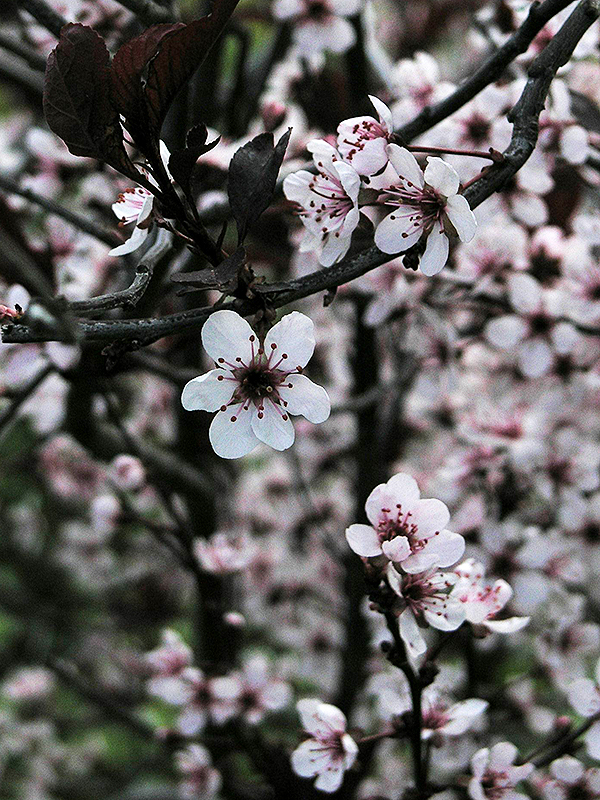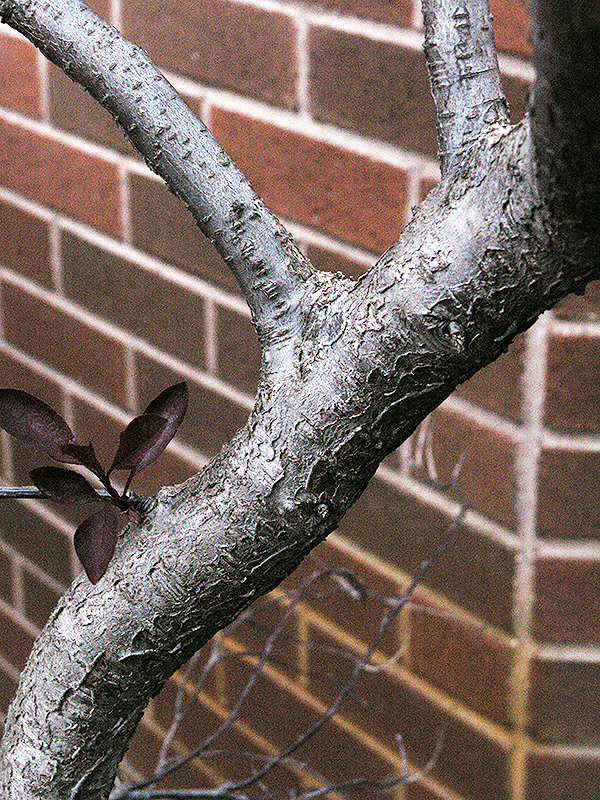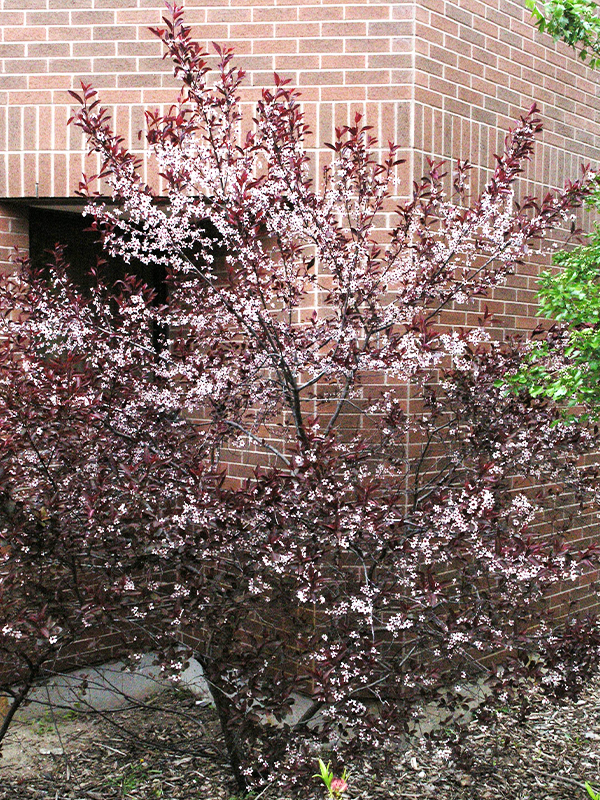| General Description | Prunus x cistena is a deciduous flowering shrub of garden origin with dark stems and red-purple leaves contrasting beautifully with fragrant white blooms. |
| Shape | Oblong to rounded. |
| Cultivation | Some flexibility with soil types (sandy to clay) and pH (acidic to alkaline). Needs moist but well-drained soil and prefers full to partial sun. Leaf colour is most vibrant in full sun.
|
| Pests | Possible problems include: aphids, borers, scale, tent caterpillars, canker and leaf spot.
Plum Pox:
Symptoms may be confused with other diseases/disorders such as nutrient deficiencies or pesticide injuries. PPV symptoms can occur on leaves, flowers and/or fruit. Faint yellow rings or lines may be found on the leaves. PPV generally does not cause plant mortality however, can reduce the plant productivity and longevity.
How to Reduce the Spread and Impact of PPV
1. Propagate vulnerable Prunus trees and shrubs outside of the affected area
a. Isolation is important to protect clean plants from future spread of the disease.
b. Propagating and growing vulnerable plants away from the virus-infected area reduce the likelihood of the disease spreading any further. This should be as far away from the quarantined area and any potential sources of the virus.
2. Propagate Prunus plants with virus-free Budwood and Rootstock from virus tested mother trees
a. This eliminates the propagation link for viral diseases.
3. Inspect vulnerable Prunus for symptoms
a. All Prunus shrubs and trees should be visually inspected for symptoms at lease twice per year and conducted by trained personnel familiar with the virus.
b. Any plants found to be infected should not be moved or sold and must be reported to the Canadian Food Inspection Agency immediately.
c. Inspections should not be conducted in periods of hot weather (temperatures over 30˚C).
4. Manage aphid vectors
a. Aphids are extremely attracted to suckers (vegetative shoots at the base of the tree), these should be removed to avoid aphid colonization, feeding or migration.
5. Plant tolerant and resistant varieties
a. When available, grow plum pox tolerant or resistant Prunus varieties.
|
| Notable Specimens | Ridgetown College, Ridgetown, Ontario, Canada. |
| Habitat | Horticultural origin. |
| Flower/Leaf Bud Description | Pink, usually with several exposed scales.
|
| Leaf Description | Alternate, simple, ovate, elliptic to obovate. The apex is pointed, broadly wedge-shaped or rounded, with a thick leathery texture, 3.5-6 ⨉ 2.5-3 cm. |
| Fruit Description | Black-purple, 2 cm in length appearing in July. Often goes unnoticed because of their size and poor contrast with foliage. Contains a single, large seed that is toxic.
|
| Colour Description | The foliage is very vibrantly red-purple, persisting throughout the summer. If placed in part shade, it will change to bronze-green.
|
| Texture Description | Medium-textured in all seasons.
|
